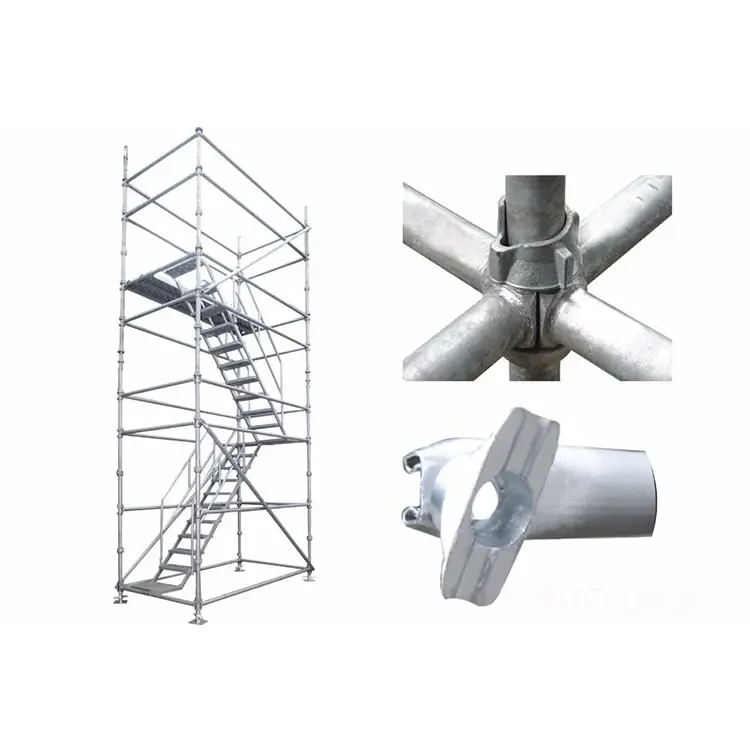What Is The Standard Size Of Cuplock Scaffolding?
Introduction:
Cuplock scaffolding is a popular choice in the construction industry due to its versatility, ease of use, and efficiency. One common question that arises when working with Cuplock scaffolding is the standard size. Understanding the standard size of Cuplock scaffolding is crucial for ensuring safety and efficiency on construction sites. In this comprehensive guide, we will delve into the standard size of Cuplock scaffolding, its components, and why it is essential to adhere to these measurements.

Overview of Cuplock Scaffolding
Cuplock scaffolding is a type of modular scaffolding system that consists of vertical standards with cups at set intervals, onto which ledgers can be inserted and secured by a locking mechanism. This design allows for quick and easy assembly, making it a preferred choice for various construction projects. The Cuplock system is known for its strength, durability, and versatility, making it suitable for both small-scale and large-scale projects.
The standard size of Cuplock scaffolding typically varies depending on the height of the structure being erected. However, there are some common measurements that are widely accepted in the industry.
Vertical Standards
Vertical standards are the primary vertical components of Cuplock scaffolding. These standards are available in various lengths to accommodate different heights of structures. The standard sizes of vertical standards for Cuplock scaffolding typically range from 0.5 meters to 3 meters, with increments of 0.5 meters. Choosing the appropriate length of vertical standards is essential to ensure stability and safety on the construction site.
The vertical standards are equipped with cups at fixed intervals, usually at 0.5 meters, where ledgers can be inserted and locked into place. This standardized spacing ensures that the scaffolding system is securely assembled and can support the weight of workers and materials.
Ledgers
Ledgers are horizontal components that connect the vertical standards in Cuplock scaffolding. These ledgers are available in standard lengths ranging from 0.9 meters to 3 meters, with incremental sizes of 0.3 meters. The length of the ledgers should correspond to the spacing between the vertical standards to ensure proper alignment and support.
The ledgers are inserted into the cups on the vertical standards and then locked into place using a captive wedge lock system. This locking mechanism provides a secure connection between the ledgers and the standards, creating a stable platform for work at various heights. It is crucial to use the correct size and spacing of ledgers to maintain the structural integrity of the scaffolding system.
Diagonal Braces
Diagonal braces are diagonal components that provide lateral stability to Cuplock scaffolding. These braces are available in standard lengths ranging from 1.8 meters to 3 meters, with incremental sizes of 0.3 meters. The diagonal braces are installed between the vertical standards to prevent lateral movement and ensure the stability of the scaffolding structure.
Proper placement and sizing of diagonal braces are essential for maintaining the rigidity of the scaffolding system and preventing swaying or tipping. These braces are typically installed in an X-shaped pattern between the vertical standards to distribute the load evenly and enhance the overall strength of the scaffolding.
Base Jacks
Base jacks are adjustable components that provide support and stability to the bottom of the vertical standards in Cuplock scaffolding. These jacks are available in standard sizes ranging from 0.3 meters to 0.6 meters, with incremental sizes of 0.1 meters. The base jacks are used to level the scaffolding system on uneven or sloping surfaces and ensure a secure foundation for the structure.
Properly adjusted base jacks can help distribute the weight of the scaffolding system evenly and prevent any tilting or instability. It is essential to check the alignment and height of the base jacks regularly to maintain the stability and safety of the scaffolding structure.
In conclusion, understanding the standard size of Cuplock scaffolding is crucial for achieving a safe and efficient construction site. By following the recommended sizes for vertical standards, ledgers, diagonal braces, and base jacks, construction workers can ensure the stability, strength, and integrity of the scaffolding system. Adhering to these standard measurements is essential for creating a secure working platform for workers and maintaining safety standards on construction sites.

